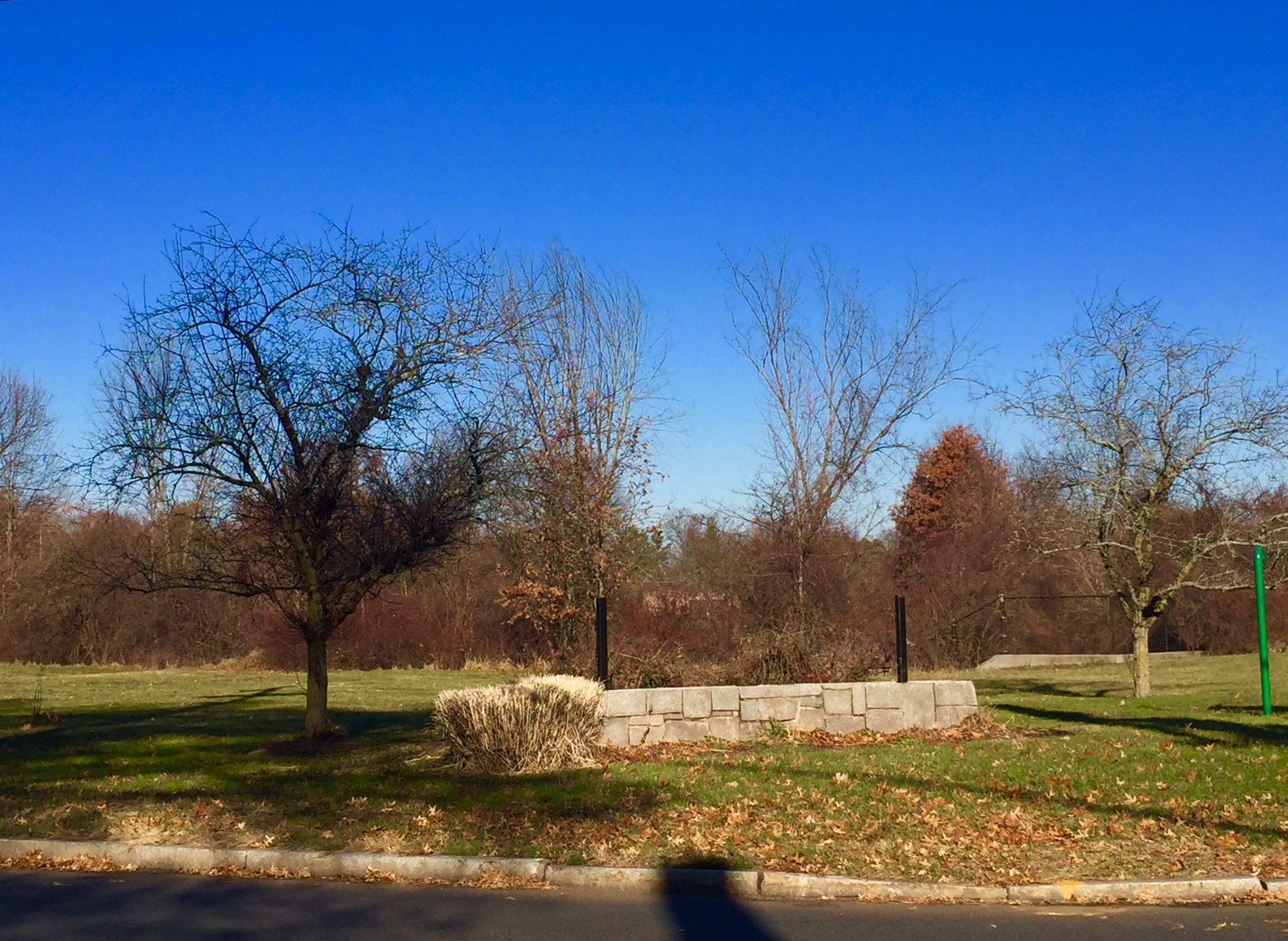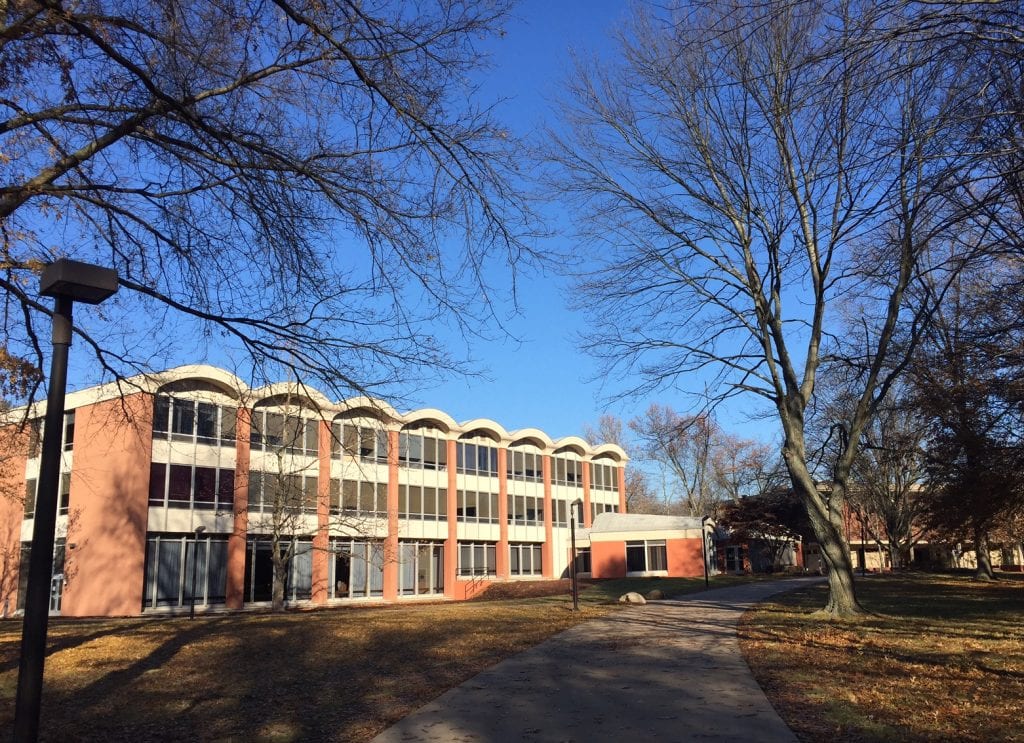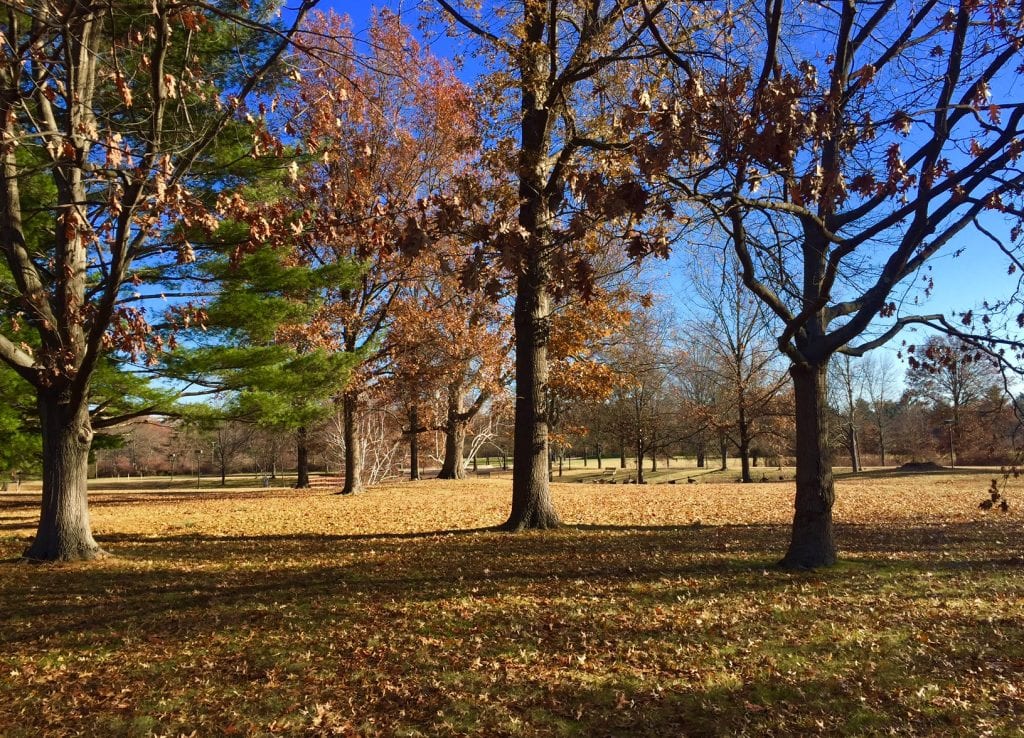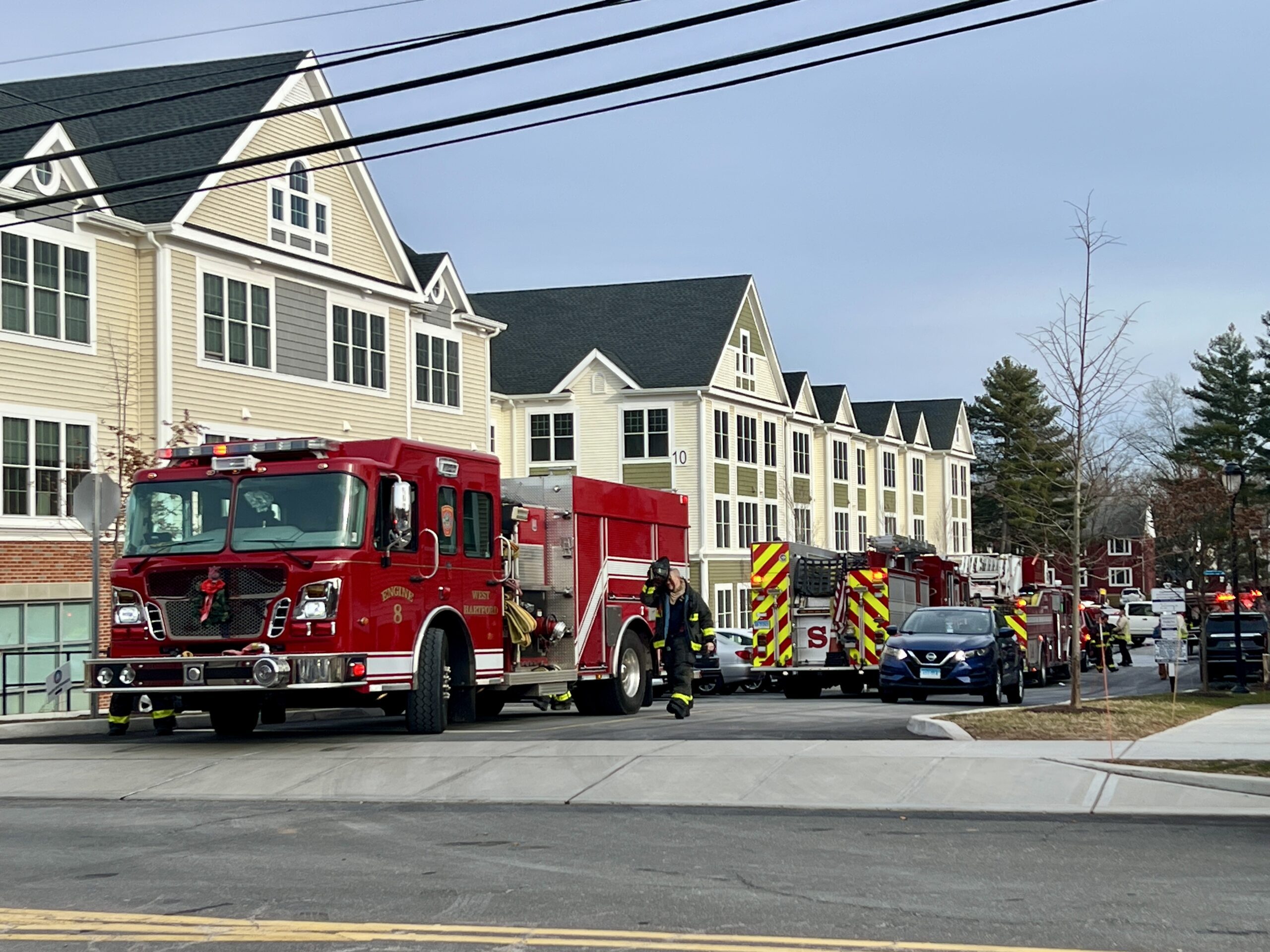West Hartford To Engage Community in Discussion about UConn Property

Audio By Carbonatix

Once UConn moved to its downtown campus in late August, the sign at the corner of Trout Brook Drive and Asylum Avenue, and all other signage, was removed. Photo credit: Ronni Newton (we-ha.com file photo, December 2017)
The community engagement process is scheduled to begin Jan. 17 with the launch of an online survey.

The former UConn West Hartford campus, which includes 58 acres and several buildings, stands largely vacant. Photo credit: Ronni Newton (we-ha.com file photo, December 2017)
By Ronni Newton
The West Hartford Town Council voted in December 2017 to terminate the town’s agreement with the University of Connecticut to purchase the former campus property in West Hartford, but promised to engage the community in a process to determine the most beneficial uses of the property.
When the Town Council’s Ad Hoc Subcommittee on Economic Development made the recommendation to the full Council that the purchase agreement be terminated “due to the uncertain and potentially significant costs of remediating the property,” Dallas Dodge, who chairs the subcommittee, said the Town Council would “begin a robust community engagement process,” especially involving the surrounding neighborhood, and hoped to begin that process in January.
At a meeting Wednesday night of the Ad Hoc Subcommittee on Economic Development, plans for that engagement process were outlined by Town Manager Matt Hart, Community Development Manager Mark McGovern, and Town Planner Todd Dumais.
Consultant Milone & MacBroom, which worked extensively with the town for more than a year doing due diligence work on the property, has been hired to assist with the engagement process, at a cost of approximately $20,000. McGovern said Milone & MacBroom’s costs would be lower than that of other consultants because the firm already has “background knowledge” about the property.
Some aspects of the outreach, including creation of a project website, will be done by staff in the town planner’s office, McGovern said. The webpage for this project, when completed, will be housed on the Planning and Zoning page of the town’s website and featured periodically on the homepage as well to give it greater visibility.
The proposed outreach plan has been modeled after the outreach done to develop a mission for West Hartford Center, McGovern said, which reached even more people than expected. Planning and environmental consultant Fitzgerald & Halliday, Inc. was engaged for that process.
The engagement will kick off with an online survey that should launch “on or about Jan. 17,” McGovern said. Survey Monkey will be utilized and Milone & MacBroom is working with staff to develop the number of questions as well as the content.
Dumais said that his department’s budget will absorb the cost of sending out the survey, as it did with the survey for the Center density outreach process.
McGovern said that plans are also to do a mailing to property owners that are within a certain distance of the property. The target date for the mailing is Jan. 22, and he said that current plans are to send it to 860 property owners.
An additional list of stakeholders has been identified to be included in the engagement process. The list, which is still under development, includes Bishops Corner businesses and organizations; town departments, boards, and commissions; universities; private schools; business and neighborhood associations from other parts of town; and the Mandell JCC.
McGovern said that local media will also be asked to publicize the engagement process as well as two forums/community workshops which the town would like to host in the first part of February. The forums will be held either in two back-to-back sessions on the same night or on two different nights.
Dates for the forums, which will be facilitated by Milone & MacBroom and held in the West Hartford Town Hall auditorium, are still being finalized, and there will be a snow date, McGovern said.
McGovern said that each forum will be about 90 minutes and include an interactive survey with attendees. “It’s really effective, really gets people engaged and thinking,” McGovern said, and will help attendees engage in breakout sessions in a positive way.
Those small group breakout sessions will focus on four topics, which will be determined after data from the online survey is received. It is anticipated that attendees will attend each session for about 10 minutes.
He anticipates that Mayor Shari Cantor will provide an introduction to the overall forums, and Dodge (as chair of the subcommittee), Corporation Counsel Pat Alair, and Hart will also speak.
Dumais will explain the floodplain, wetlands, and zoning issues that impact development of the site, and Milone & MacBroom will present their due diligence findings as well as the results of the online survey.
Impact assessments will also be presented at the forum by Milone & MacBroom, and will focus on four potential future uses for the property and their related zoning constraints, fiscal considerations, traffic, and parking assessments.
Milone & MacBroom had in the past provided the town with several conceptual development options for the 58-acre property, but McGovern said Friday that those were done based on the existing zoning constraints of the site, which is in a residential zone with a special use permit.
The impact assessments to be provided at the forums “will talk more about what could be done even if it requires a zoning change,” McGovern said.
One important consideration for any developer is the cost of the remediation of environmental contaminants, particularly polychlorinated biphenyls (PCBs) that have already been discovered on the site. The unknowns surrounding those contaminants were a major factor in the town’s decision to seek extensions and ultimately terminate the contract to purchase the property.
McGovern said Friday that the town is waiting for UConn sign a release allowing the town to make public all of its due diligence findings. The town expects to receive the release, because without it will be unable to have the type of public discourse that is desired.
In addition, McGovern said, “UConn continued to do investigations and we don’t have those results yet either.” The university had been working with the Department of Energy and Environmental Protection (DEEP) and the town can’t even ballpark the remediation costs until UConn provides the additional information.
Following the forums, the next step in the process will be production of a draft report – “sort of a consensus vision for the property,” McGovern said, that is based on the feedback received. The goal is to present that report to the subcommittee on or about March 1, then post it on the town’s website and seek additional feedback.
In addition to the two major forums, McGovern said that smaller presentations facilitated by town staff may also take place, perhaps at the Senior Center or as “pop-ups” at other town events that attract a large number of people from the community as well at the Bishops Corner Neighborhood Association meeting on Feb. 12.
“If that all goes according to plan we essentially could have a plan to the Council on March 27,” McGovern said.
At the subcommittee meeting, in response to a question from Council member Liam Sweeney, McGovern said having 75 people attend each forum would be ideal, and the goal is to have about the same attendance as at the session about density in the Center. “Overall we would be plenty happy with 100 people,” said McGovern.
Deputy Mayor Beth Kerrigan voiced concerns at Wednesday’s meeting that the town is spending $20,000 of taxpayer money only to have the process result in a “dream Christmas list without any consideration of what this is going to cost.” Everyone is going to have their own wish list, she said, and it might include using the property for things like a dog park or tennis courts, and she hopes the public won’t end up disappointed in the long run.
Hart said that he will preface the forums by speaking about the existing conditions on the property as well as zoning constraints and note that in light of the environmental liabilities and cost of remediation “at least a portion of the property should result in grand list growth.”
Hart also noted the importance of conducting this process in a professional way, and said that Milone & MacBroom’s rates are competitive. “The advantage is that they have a history and we wouldn’t have to spend a lot of money to get them up to speed.” If the town tried to conduct the process on its own it might take six or seven months.
Minority Leader Chris Barnes mentioned that it will also be important to inform the community that any recommendation developed through the engagement process is just that, and a developer or partner will still have to be found. “We want to hear from them as part of the overall process – it will have whatever weight we give it,” Barnes said, and this will put ideas out on the table and provide guidance.
“The reason we’re doing it this way is we are going to be getting a cross section of opinions, and it’s less likely that we will get an artificial response to the engagement,” Dodge said.
Dodge agreed that it will be important for at least some portion of the property to generate revenue, and Hart will set those expectations in advance. “If there is going to be a public use you need grand list growth to finance that.”
Barnes praised the aggressive timeframe for the process, and is hopeful it can be conducted on a parallel track to the town’s budget process, which will be taking place throughout March and April.
“The other reason we need to do this on an expedited basis is it’s not our property. It’s UConn’s property,” Dodge said, and they want to get rid of it.
UConn spokesperson Stephanie Reitz said in an email that UConn wants to sell the property. “It’s of no benefit to the University – either financially or academically – to keep and maintain an unused piece of property that’s not contiguous to our other sites and for which we have no future use.”
While UConn has implemented interim measures to limit any health risks arising from contaminants on the site, Reitz added that “UConn believes the ultimate remediation can be done most effectively in connection with redevelopment of the site. It wouldn’t make sense to replace building materials in a vacant structure that will eventually be torn down.”
She said that UConn believes that remediation is best done when the site is developed, by and at the expense of the developer, rather than with public funds.
Reitz said that UConn is not concerned about the site’s ultimate use, which is up to the town. “Our goal is to sell it to any buyer who is willing to pay fair value regardless of the proposed use. The Town of West Hartford would consider issues regarding which uses are permitted or desirable,” she said.
“UConn does have a duty to sell the property rather than to keep paying for its upkeep when we know we won’t be using it again, though, so we need to remain flexible in looking at potential buyers while at the same time watching the town’s engagement process,” Reitz said.
UConn has updated a web page it had developed for the sale of the property, which provides specific details about the site. That page now indicates that the contract with West Hartford has ended, and Reitz said that while the University is talking with any interested parties and has had several inquiries, “nothing has proceeded beyond discussions to any formal actions with them.”
UConn had not been engaged in trying to find buyers from July 2016 through December 2017, while the purchase agreement with the town was in place. Reitz said that once West Hartford terminated the contract, “word spread quickly” among developers that had been watching the process.
Hart said that the town has kept UConn apprised of its progress and plans for the upcoming community engagement process. He said that UConn is “hopeful and optimistic that we can identify a preferred developer or development partner,” and has also agreed to pass along information to the town about interest they receive.
“We definitely welcome any efforts by the town to identify potential purchasers … and want to keep working collaboratively with them,” Reitz said. “We’ve had a good working relationship with mutual respect, and we don’t expect that to change in any way.”
Like what you see here? Click here to subscribe to We-Ha’s newsletter so you’ll always be in the know about what’s happening in West Hartford!

The former UConn West Hartford campus is 58 acres, much of which is wetlands. The property is largely vacant now, other than some geese. Photo credit: Ronni Newton (we-ha.com file photo, December 2017)




Hello, I was looking on the town website for the survey, but didn’t see it. Do you know if it has been posted? If so, where to find it. Thank you for your help.
[…] Town of West Hartford officially embarked on the “community visioning” process for the vacant 58-acre former University of Connecticut West Hart… on Jan. 30, with the launch of an online survey to obtain input from residents and other […]